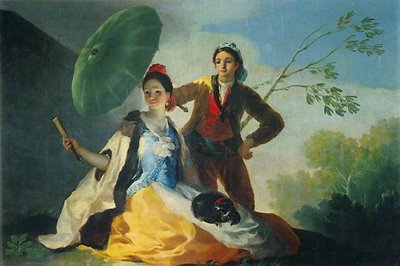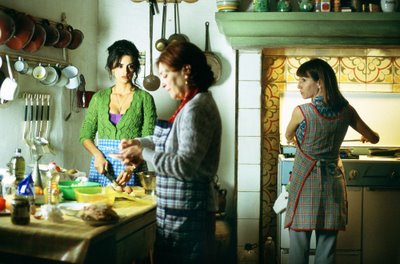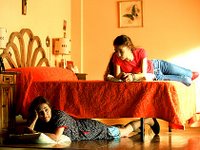Naked in Baghdad.

I learned a lot about how the war in Iraq was seen by the Iraqis. I didn’t know anything about that, only stories from the press, that often only focused in the bombings and the military fronts.
It’s incredible all the trouble she had to go through to broadcast, even though she went in the country as a journalist. Also, it is very good to know that there is such a good relationship between journalists in those hard times. She really knows who to talk to in each situation, and I think that is very important for a journalist.

It is moving how she remembers people who helped her in other situations where she was a correspondent. She seems a very self-sufficient person, but she shows that she knows she needs other people’s help to succeed in her job. I think this is very important in journalism; one should never forget to be humble, because we always need someone else to get our stories done.
Journalism isn’t an easy job, and it takes a lot of love for it to tolerate its inconveniences. Garrels shows through her words a deep love for her profession. I didn’t understand why she would prefer to be where she was, instead of staying with her husband and their apparently happy and comfortable lives.
This book is a personal tale: how Garrels experienced her stay in Baghdad. Therefore, I don’t think its lack of objectivity, which doesn’t appear very often anyway, harms the journalistic intention of the book at all. She reports a lot of opinions, and we can see which ones she agrees with and which ones she doesn’t.
The book is told in first person, Garrels voice, as in a personal diary. But there are also interventions by her husband Vint: emails that he wrote to family and friends interested in Garrels’ situation. As a radio reporter, Garrels has the ability to describe things so we can see them.

The following passage resonated with me on an emotional level because I can understand her feelings. It’s not easy to part with such a strong experience, even when some of its moments have been bad. She has gone through a very drastic experience, and she has experienced true feelings that she may not experience again.
“I wake Amer up one last time with ‘our knock’. He comes downstairs to the lobby. We don’t talk, and with the phones out and e-mail cut, I don’t know when we will be able to again. Finally I hug him and we both start to cry. I climb into the car, and I look back as the convoy pulls out of the Palestine. We wave. (…) When I get to the hotel in Amman, I turn on the shower and stand in the streaming, steaming water and find myself sobbing uncontrollably. I have left a part of me in Baghdad, an intense, cherished relationship that can never be recaptured. The story is far from finished. But I want to go home. I want to see Vint. I want to thank him for understanding. I call to say I am on my way.”
I like this passage so much because she opens herself to the reader, and tells her feelings in a very simple way. I also like this passage because it’s very visual. I can see how they come down the stairs, hug each other and say farewell.
The passages I like more are the ones where Garrels describes the situation of Iraqi families. I think that is where we see the real consequences of the war. The Iraqis are the ones suffering and struggling to survive in their own home. And the war doesn’t discriminate for age, gender or any other characteristic. It affects every one in a different way.
“Though only fifty two, Sakhara looks much older. Afflicted with high blood pressure and diabetes, her legs are swollen and she moves to the couch with difficulty. I stupidly tell her we are the same age, looking for some common ground. She looks at me sadly, touches my cheek, and then touches her own mottled skin. She says she can’t bear to live through another round of missiles and bombs and if necessary will go, alone, to stay with a daughter outside the capital”.
In just one paragraph, Garrels has made a complete portrait of this poor woman, who is older than she would be in other circumstances. I feel sorry for her, as Garrels felt in that moment. She transmitted her feelings to me.
The main idea of the book as I see it is how Iraqis experience the war. Garrels is able to put aside her concerns and let us know the concerns of others, which are greater, for they can’t get away from them. While she is there she shares some of these concerns, and has some other different ones.
 I think Garrels was trying to unify her experience in Baghdad under one “roof”, that is, to let know the readers her story as well as the Iraqis story at the same time. I think she did a great job. I felt compelled to read her story; I was interested to know what would happen to her next. She was the main character to go back to.
I think Garrels was trying to unify her experience in Baghdad under one “roof”, that is, to let know the readers her story as well as the Iraqis story at the same time. I think she did a great job. I felt compelled to read her story; I was interested to know what would happen to her next. She was the main character to go back to.Her professional background covering other wars makes it easier to understand all the process she goes through. She explains as necessary, that is, when a question came to my mind while reading, the answer would be in the next line or in the next paragraph.















